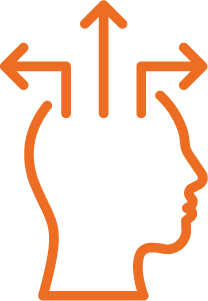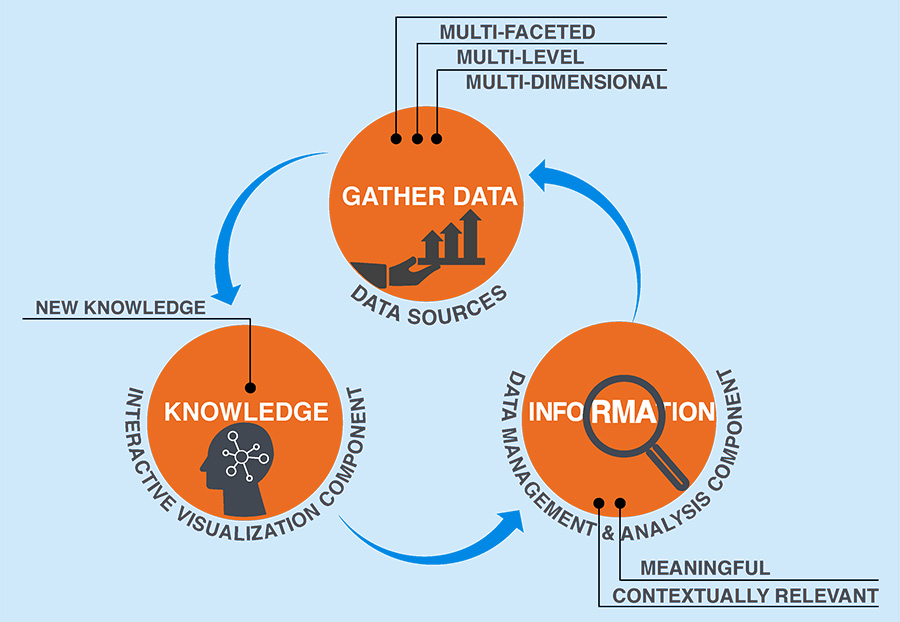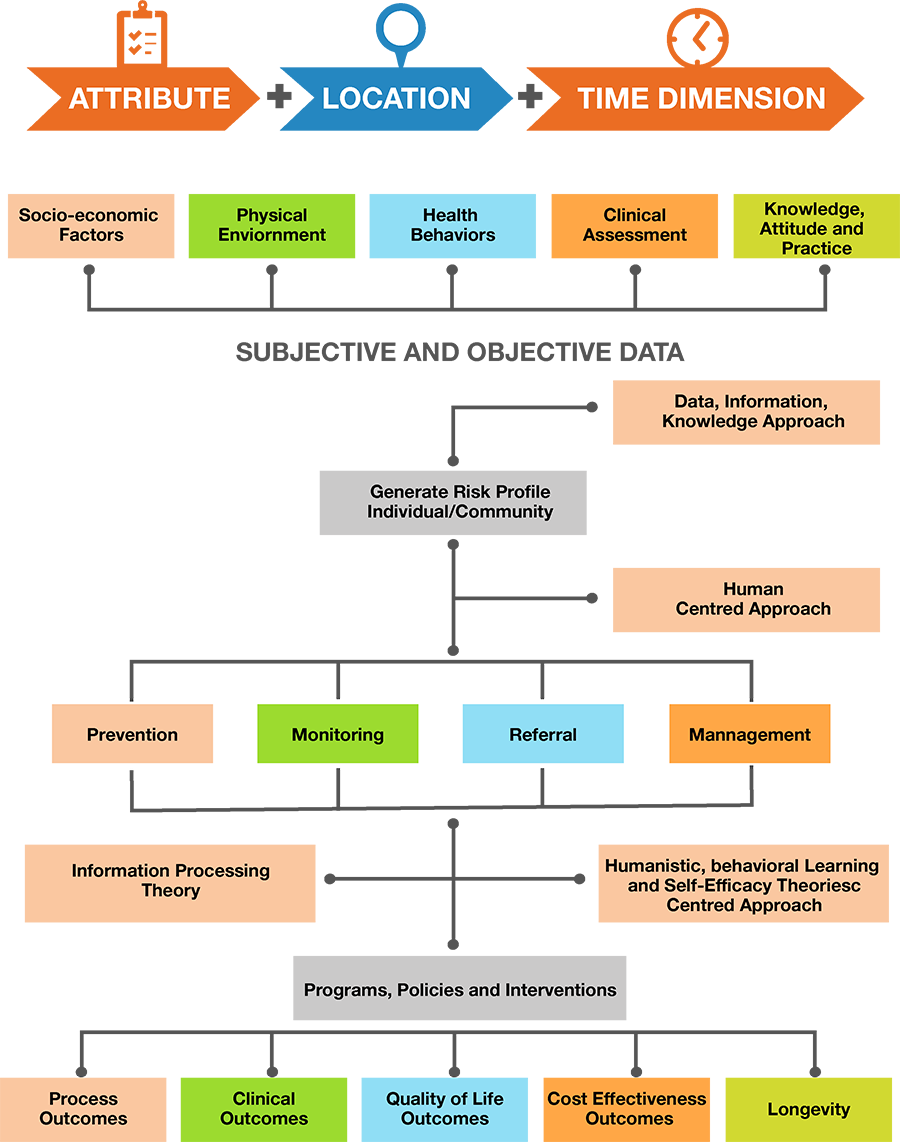SMAART Informatics Framework
The SMAART informatics framework designed using the combined principles of Data, Information and Knowledge (DIK), Human Centered Approach, and Information Processing Theory and Humanistic, Behavioral, and Learning theories (Figure1).

COLLECTION, INTEGRATION AND
PROCESSING OF MULTIDIMENSIONAL DATA

ATTRIBUTE DATA
(e.g. context answers questions like what)

SPATIAL DATA
(e.g. location data answers questions like where)

TEMPORAL DATA
(e.g. time data answers questions like when)
THEORETICAL FRAMEWORK TO DESIGN INTERFACE
AND INTERVENTION COMPONENTS

HUMAN CENTERED APPROACH
(User, task and requirement analysis)

GROUNDED THEORY
(Interaction between person, environment and behavior)

COGNITIVE FIT THEORY
(Task and information presentation)

INFORMATION PROCESSING THEORY
(Present information in a format easy to understand)
OUTCOME ASSESSMENT

PROCESS OUTCOMES

USEFULNESS AND COST-EFFECTIVENESS

CLINICAL AND NON-CLINICAL OUTCOMES
Figure1. Theoretical framework of SMAART Informatics framework
SMAART framework utilizes Data Information Knowledge (DIK) pathway to collect and process multifaceted, multi-level, multi-dimensional data into meaningful and contextually relevant information. New insights and knowledge generated through interactive visualization information making it easy to understand (Figure2).

Figure2. Theoretical framework of SMAART Informatics framework

Figure3. SMAART informatics framework to enhance population health outcomes
